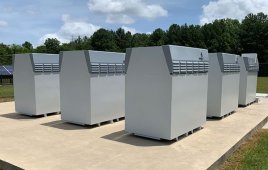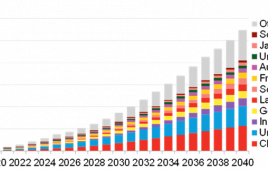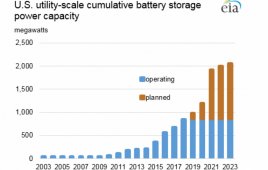In large facilities such as water treatment and power plants, it’s common to find many different control systems on a range of equipment. The simple programmable logic controllers frequently encountered can operate the equipment, but offer little additional capability.
Most vendors pay little attention to the benefits of data integration, so the accessibility of production data is rarely considered in design stages. Users in these situations typically end up with an unwieldy, expensive, and difficult to maintain amalgamation of automation equipment that creates nightmares for operators, maintenance, and IT personnel.

For more stable power production than would be possible from wind alone, engineers in Spain designed a plant to produce and store gaseous hydrogen. When the grid needs more power, hydrogen is burned in a motor that turns a generator.
To get around the problem of controls from many manufacturers, one facility design team selected the Snap PAC System from Opto 22, Temecula, Calif., (www.opto22.com) because it is said to provide an all-purpose solution for automation and control and data acquisition, enterprise connectivity, and communication to databases.
The facility the team applied the controls to is the Sotavento Power Plant in Galicia, Spain. Gas Natural SDG, a Spanish energy company and its partners, designed it to assess the suitability of gaseous hydrogen as a storable form of energy. Equipment there electrolyzes water into hydrogen and oxygen for compressors that pressurize the hydrogen and store it onsite. Electrical power come from several wind turbines. Hydrogen is then fuel for a motor-driven generator that provides a constant power level to the national electricity network. Sotavento annually produces 38,500 MWh.
Engineers there recognized that while many hardware manufacturers lock customers into often proprietary communications protocols, Opto 22, they say, provides connectivity by open, standard protocols such as TCP/IP over Ethernet, SMTP (Simple Mail Transfer Protocol), SNMP (Simple Network Management Protocol), and FTP (File Transfer Protocol.) The products includes programmable automation controllers (PACs) that come with a mix of devices up to four serial ports for RS-232, RS-422, RS-485 serial communication, plus PPP modem connections.
Optomation Systems, the firm that selected controls for the facility, and Project Manager Fabio Alberini say the secret to successful implementation of projects like this rests in defining the protocols at the hardware purchase stage, well before writing the first line of code. “Support the end user is fundamental. If the customer understands and insists on the importance of data integration, suppliers will be obliged to include the necessary hardware interfaces and software support as part of their deliverables,” says Alberini.
He adds that there is still no better standard than Modbus for moving data between industrial devices. “It needs no special hardware or software interfaces, and it‘s royalty free and easy to implement. At the Ethernet level, Modbus/TCP is an even better alternative. Also, be aware that there are various ‘flavors’ of Modbus, but this is usually not a problem for us because the Snap PAC System supports at least six of these.
Filed Under: Energy storage






The efficiency of using hydrogen as an energy storage medium has been called into question often. Options to “feeding the grid” would be to envision H2 as a feed stock to chemical processes. Compare the energy efficiency of a dedicated wind production of H2 to industrial scale steam reforming, or as a byproduct of petroleum refining and chemicals production. Turning 99.999% pure H2 into building blocks for plastics could trim a lot off the oil deficit.
In this day and time even the addition of 10-20% H2 to existing natural gas supply chain has the advantage of stretching the limited resource as well as reducing the N2 and S2 pollutants.